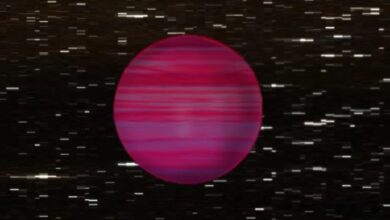Planet Sizes and Locations in Our Solar System
1 min read
Planet Sizes and Locations in Our Solar System

The eight planets and dwarf planet Pluto.
NASA
Our solar system has eight planets, and five officially recognized dwarf planets. Which planet is biggest? Which is smallest? What is the order of the planets as we move out from the Sun?
This is a simple guide to the sizes of planets based on the equatorial diameter – or width – at the equator of each planet. Each planet’s width is compared to Earth’s equatorial diameter, which is about 7,926 miles (12,756 kilometers).
At the bottom of the page, there is a handy list of the order of the planets moving away from our Sun.
Order of Planets and Dwarf Planets – Distance From the Sun

A stylized illustration of our solar system.
NASA/JPL
- Mercury: 36 million miles (58 million kilometers)
- Venus: 67.2 million miles (108 million kilometers)
- Earth: 93 million miles (149.7 million kilometers)
- Mars: 141.6 million miles (227.9 million kilometers)
- Dwarf planet Ceres: 257 million miles (413 million kilometers)
- Jupiter: 483.7 million miles (778 million kilometers)
- Saturn: 889.8 million miles (1.4 billion kilometers)
- Uranus: 1.8 billion miles (2.9 billion kilometers)
- Neptune: 2.8 billion miles (4.5 billion kilometers)
- Dwarf Planet Pluto: 3.67 billion miles (5.9 billion kilometers)
- Dwarf Planet Haumea: 4 billion miles (6.5 billion kilometers)
- Dwarf Planet Makemake: 4.3 billion miles (6.9 billion kilometers)
- Dwarf Planet Eris: 6.3 billion miles (10 billion kilometers)
First published at NASA.gov







